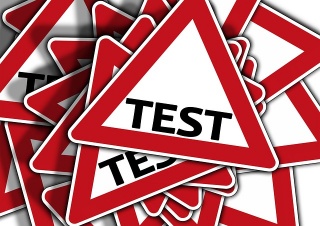Learning in a digital age/LiDA104/Media literacy/Quiz
From WikiEducator
Jump to: navigation, search
The questions published at the end of each learning pathway are re-used for the knowledge test for learners interested in earning a digital badge or certificate of participation for the Critical Media Literacies and Associated Digital Skills (LiDA104) micro-course. Please consult the Certify participation page for more information.
True - false questions
Indicate whether the following statements are true or false:
- Media Literacy is the ability to access media in different forms.
- True
- No. Look again at the definitions in the Introduction to Media Literacy learning pathway.
- False
- That's right. Media literacy is more than the ability to access media - it also includes more active engagement with media, such as evaluating and creating.
- True
- The issues relating to media literacy are the same for everyone, regardless of age.
- True
- No. Revisit the activity on Media Literacy Perspectives to learn more.
- False
- You are right. There are some age-related issues, such as managing age-appropriate access to online content.
- True
- Communication is basically an exchange of information or meaning, but there are multiple different models of communication.
- True
- Yes, that's true.
- False
- That's not right. Think again.
- True
- Communication can help to set social standards by demonstrating what is acceptable or unacceptable in society.
- True
- Well done. That statement is true.
- False
- That's not the right answer. Review the resource on Analysing Texts for more insights on the roles of communication.
- True
Multiple choice questions
- Which of the following terms is used to categorise one-to-many and many-to-many communication acts? (Select one.)
- Intercultural communication
- No- refer back to the reading ‘Analysing Texts: Media and Theory’ on the ‘Analysing texts’ page.
- Organisational communication
- No - refer back to the reading ‘Analysing Texts: Media and Theory’ on the ‘Analysing texts’ page.
- Mass communication
- Yes, that’s right.
- Interpersonal communication
- No - refer back to the reading ‘Analysing Texts: Media and Theory’ on the ‘Analysing texts’ page.
- Intercultural communication
- The Aspen Media Literacy Leadership Institute defined media literacy as “the ability to access, analyze, evaluate and create media in a variety of forms”. In which year was this definition first published? (Tick one.)
- 1982
- No - review the ‘Defining media literacy’ page and try again.
- 1992
- Yes, well done.
- 2002
- No - review the ‘Defining media literacy’ page and try again.
- 2012
- No - review the ‘Defining media literacy’ page and try again.
- 1982
- Which of the following concepts are included in the Center for Media Literacy’s expanded definition of Media Literacy for the 21st century? (Tick all that apply - there are two correct answers.)
- Media Literacy is an essential skill to enable young people to engage as citizens of a democracy
- No - the definition does not claim that media literacy is only relevant to a particular age group.
- Media literacy builds an understanding of the role of media in society
- That’s right.
- Media literacy builds essential skills of inquiry and self-expression
- That’s right.
- Media literacy is primarily about evaluating news sources
- No - the definition also includes creating and participating media, and it applies to all sorts of messages, not just news sources.
- Media Literacy is an essential skill to enable young people to engage as citizens of a democracy
- Indicate which one of the following statements about press releases is FALSE:
- A press release is typically written by someone who works in Public Relations
- No - this statement is true, not false. A Public Relations professional would usually be tasked with writing any press releases.
- A press release should provide key information, enabling a journalist to use it to produce their own article or report
- No - this statement is true, not false. A press release should include core information around the who, what, where, when, why, and how of any particular story.
- A press release is similar to a product promotion or sales pitch
- You’re right - this statement is false. A press release may be promoting something (such as an event, product, or service), but it will lose credibility if it reads like a marketing pitch.
- A press release must include the date and writer’s location at the beginning of paragraph one.
- No - this statement is true, not false. The date and location are both important parts of any press release, and add context to the contents of the release itself.
- A press release is typically written by someone who works in Public Relations
